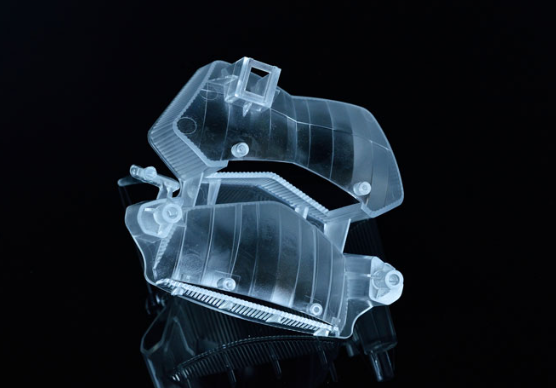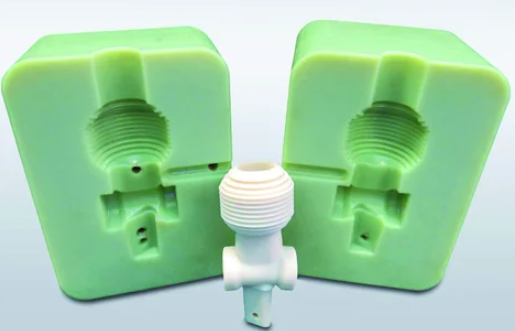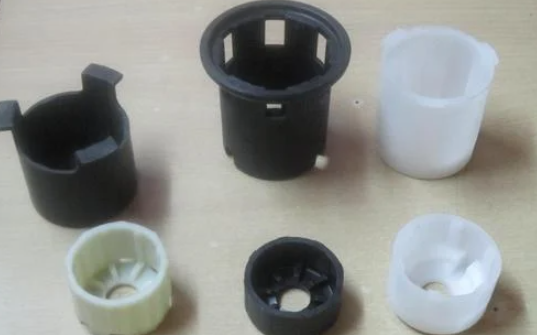The difference lies in their focus: A Side molding emphasizes surface aesthetics, while B Side molding concentrates on structural features.
Overview of Injection Molding
Injection molding is a widely used manufacturing process for producing parts from both thermoplastic and thermosetting plastic materials. The technique involves feeding plastic material into a heated barrel, mixing it, and forcing it into a mold cavity where it cools and hardens to the configuration of the cavity.

Basics of Injection Molding
Injection molding begins with melting plastic granules in a heated barrel. A screw mechanism propels the molten plastic forward, injecting it into a mold. The plastic cools and solidifies, taking the shape of the mold. This process is ideal for mass-producing high volumes of the same object.
Key Components of Injection Molding Machine
Injection molding machines consist of a material hopper, a heating unit, a plunger or a screw-type plunger, and a mold cavity. The machine’s power, usually measured in tons, determines the size and precision of the products it can produce.
Definition and Basics of Injection Molding
Process Steps
- Material Preparation: Plastic pellets are dried to the right moisture content.
- Melting: The pellets are heated and melted.
- Injection: The molten plastic is injected into the mold.
- Cooling: The plastic cools and solidifies in the mold.
- Ejection: The solidified part is ejected from the mold.
Materials Used
Common materials include polyethylene, polypropylene, polystyrene, and ABS. Each material offers distinct advantages in terms of strength, flexibility, and heat resistance.
Components of the Injection Molding Machine
Hopper
The hopper stores and feeds the plastic pellets into the barrel. Its capacity can vary, impacting the overall efficiency of the process.
Barrel and Heating System
The barrel, equipped with heaters, melts the plastic. The temperature control is crucial, as different plastics melt at different temperatures.
Injection Mechanism
Typically a screw, this mechanism injects the molten plastic into the mold. The injection speed and pressure are critical parameters that affect the quality of the final product.
Mold
Molds are custom-designed and can be complex, influencing the cost and the production rate. They are typically made from steel or aluminum for durability and precision.
Clamping Unit
The clamping unit holds the mold in place during injection and cooling. Its clamping force, which can range from a few tons to several thousand, needs to match the part size and material.
Understanding A Side Injection Molding
A Side injection molding is a critical component of the injection molding process, especially in the creation of complex parts. This technique involves the use of a specific side of the mold during the injection process, typically referred to as the “A Side,” which is crucial in determining the final product’s appearance and structural integrity.
Characteristics of A Side Injection Molding
Precision and Detailing
A Side molding is renowned for its ability to produce parts with high precision and intricate detailing. Manufacturers prefer this method when the product requires fine features or a smooth finish on the visible side.
Material Flow and Cooling
In A Side molding, the flow of the molten material and its cooling rate are crucial. Uniform cooling ensures minimal warping and maintains dimensional accuracy, which is vital for components that must adhere to strict specifications.
Mold Design and Maintenance
The design of the A Side of the mold is often more complex than the B Side. It requires regular maintenance and inspection to ensure the quality of the produced parts remains consistent.
Materials and Applications for A Side Molding
Suitable Materials
Materials commonly used in A Side molding include ABS (Acrylonitrile Butadiene Styrene), polycarbonate, and high-impact polystyrene. These materials provide the necessary strength and finish quality required for the A Side of the product.
Applications
A Side injection molding is extensively used in industries where aesthetics and structural integrity are paramount. This includes automotive parts, consumer electronics, and medical devices. For example, the outer casing of a smartphone, which demands a high-quality finish and precise dimensions, is typically produced using A Side molding.
Exploring B Side Injection Molding
B Side injection molding, often considered the counterpart to A Side molding in the injection molding process, focuses on the non-appearance side of the molded part. This method plays a crucial role in the structural and functional aspects of the product, as it typically involves the creation of features like ribs, bosses, and snap fits.
Features of B Side Injection Molding
Structural Support and Functionality
The primary role of B Side molding is to provide structural support. It often includes elements that are essential for the mechanical function of the part, such as supports, brackets, and strengthening features.
Complexity in Design
While the B Side might not require the aesthetic finish of the A Side, it often involves more complex geometries and structures to accommodate functional requirements. This complexity can impact mold design and the injection molding process.
Efficiency and Cost Considerations
B Side molding can be more efficient in terms of material usage and cycle times, as the finish requirements are typically less stringent than those of the A Side. This efficiency can lead to reduced production costs.
Material Choices and Use Cases for B Side Molding
Optimal Materials
Materials used for B Side molding include polypropylene, nylon, and thermoplastic elastomers. These materials are chosen for their strength, flexibility, and cost-effectiveness.
Diverse Applications
B Side molding is widely used in applications where internal components require robust mechanical properties. Common use cases include internal supports in automotive parts, structural elements in electronic devices, and hidden components in consumer products.

Comparative Analysis: A Side vs B Side
Understanding the differences between A Side and B Side injection molding is crucial for manufacturers to optimize their production processes and ensure high-quality outputs. This analysis delves into the distinct aspects of mold design and structure, as well as the variations in processing parameters and techniques between the two.
Differences in Mold Design and Structure
A Side Mold Design
The A Side of the mold is often designed with a focus on the visual aspects of the product. This includes smooth surfaces, fine detailing, and aesthetic considerations. The mold must ensure a high-quality finish, as it forms the exterior part of the product.
B Side Mold Design
In contrast, the B Side mold incorporates features necessary for the product’s functionality, such as supports, ribs, and snap fits. The design is less focused on aesthetics and more on structural integrity and component assembly.
Material and Cost Implications
The complexity of A Side mold design can lead to higher manufacturing costs compared to B Side molds. However, the choice of materials, like aluminum for quicker prototyping or hardened steel for longevity, affects both sides differently in terms of cost and mold lifespan.
Variations in Processing Parameters and Techniques
Injection Parameters for A Side
A Side molding often requires precise control over injection pressure and speed to achieve a flawless surface finish. The material’s flow into the mold must be carefully managed to prevent defects like sink marks or surface blemishes.
B Side Injection Techniques
B Side molding may allow for more flexibility in processing parameters. The emphasis is on the material’s strength and bonding properties rather than its appearance. This can lead to differences in cooling times and injection pressures.
Efficiency and Productivity
B Side molding generally allows for faster cycle times due to less stringent surface quality requirements, which can enhance overall production efficiency. However, the A Side’s demand for high-quality finishes may lead to longer cooling times, impacting the throughput.

Practical Considerations in Choosing A Side or B Side Molding
Selecting between A Side and B Side molding involves various practical considerations that directly impact product quality and manufacturing efficiency. Understanding these factors is crucial for manufacturers to make informed decisions that align with their production goals and quality standards.
Factors Influencing the Selection
- Part Design and Complexity: Complex designs with intricate details often require A Side molding for superior surface finish. B Side molding is more suitable for parts where internal structures and mechanical functions are prioritized.
- Material Requirements: Different materials behave differently in the molding process. For example, materials requiring a high-gloss finish are better suited for A Side molding.
- Production Volume: High-volume production might favor B Side molding due to its generally faster cycle times and cost-effectiveness.
- Cost Considerations: The cost of A Side molding can be higher due to the need for precision and high-quality finishes. B Side molding can be more cost-effective, especially for parts that are not visible in the final product.
Impact on Product Quality and Manufacturing Efficiency
- Surface Quality and Aesthetics: A Side molding directly affects the visible parts of a product, impacting its aesthetic appeal and perceived quality.
- Structural Integrity: B Side molding ensures the structural integrity of the product, particularly for parts that must withstand mechanical stresses.
- Cycle Time and Production Speed:
- A Side molding often has longer cycle times due to the need for precise control over the injection process and cooling.
- B Side molding can be quicker, boosting overall production efficiency.
Cost Implications:
- Tooling Costs: A Side molds may require higher precision tooling, leading to increased costs.
- Material Usage: B Side molds can be more efficient in terms of material usage, potentially reducing material costs.




